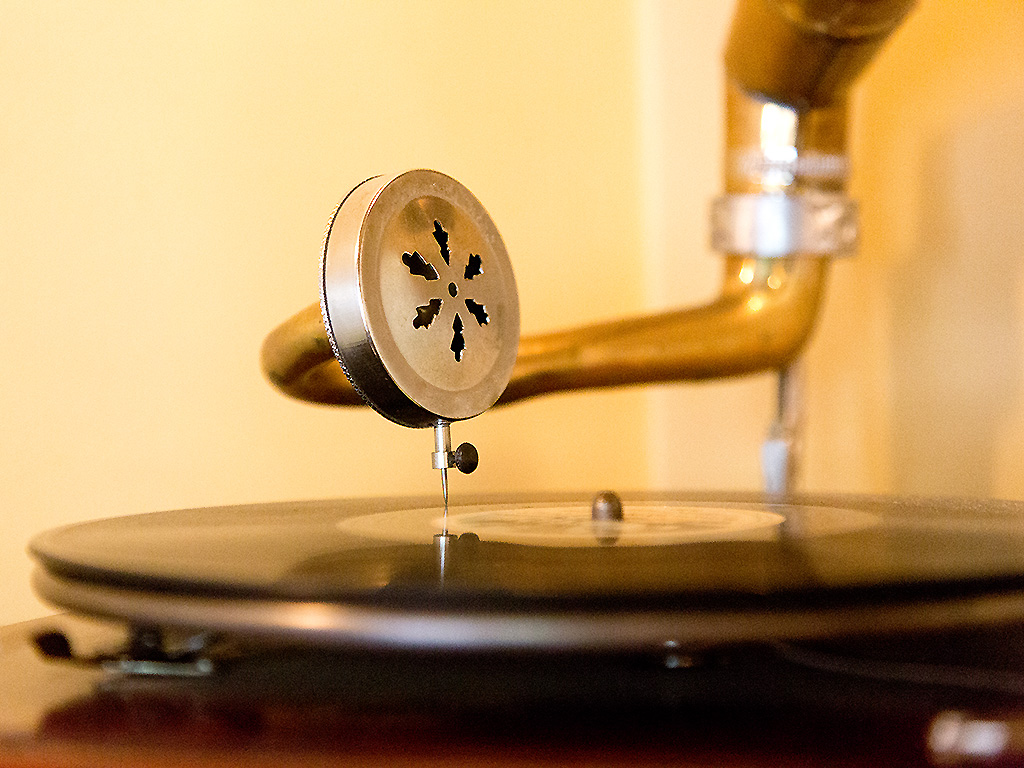For the first 50-odd years of the recorded music industry, the standard format was the 10-inch 78 RPM single. It served us well, despite all its shortcomings.

Because they were made of a shellac bound together with cotton fibres and limestone dust, they could be as fragile as fine china.
Audio quality wasn’t great, either. All recordings were in mono, quickly became rather scratchy, and wore out after about 125 plays.
READ MORE: Jerry Springer’ production halted after 27 years on the air
And then there was the issue of capacity. You were lucky to get four minutes of music per side. Longer pieces, like symphonies and operas, had to be spread out over multiple records. These were sold in packages with individual records stored in sleeves that were bound together like pages in a book. Because these collections of records reminded people of photo albums, they quickly became known as “record albums.”
- Posters promoting ‘Steal From Loblaws Day’ are circulating. How did we get here?
- Video shows Ontario police sharing Trudeau’s location with protester, investigation launched
- Canadian food banks are on the brink: ‘This is not a sustainable situation’
- Solar eclipse eye damage: More than 160 cases reported in Ontario, Quebec
Here’s one from my collection.
There were a few attempts to improve upon the 78, but those were derailed by the Great Depression, during which record sales dropped by a staggering 95 per cent over just two years.
Another issue was the Second World War. The major source of shellac was the jungles of the Malay Peninsula, the habitat of the female lac bug. Shellac came from the secretions of this insect that were scraped off trees and then refined into the raw material used for things like records. When the Japanese invaded, the world supply of lac bug goo was severely impacted. For a time in the early 1940s, the only way one could buy a new record was to trade in an old one so it could be melted down and recycled.
Meanwhile, scientists were looking for a new material for sewer pipes. Metal corroded and leached poisonous materials into the environment and concrete was too unwieldy and expensive. In the late 1920s, researchers at the B.F. Goodrich company — yes, the tire people — came up with a way to make a substance called polyvinyl chloride more workable. There was some movement toward using PVC for music discs, but that was all sunk by the Depression and Second World War.
READ MORE: Raine Maida, Our Lady Peace lead singer, reminisces about the ’90s and Canadian alternative rock
Sometime in 1946, Peter Goldmark was invited to a dinner party. Knowing that he was a fan of Brahms, his hosts tried to set the mood of the dinner by playing some of Goldmark’s favourite pieces. It was a nice gesture, but someone had to get up every three or four minutes to change the music, interrupting the flow of conversation. This seems to have annoyed Goldmark enough for him to finally do something about this problem. The company had been working on a solution to the 78 RPM problem, but other projects, like this new thing called “television,” kept getting in the way.
Goldmark, you see, was the head research scientist at CBS Laboratories, which was associated with Columbia Records, one of the largest labels of the day. He directed his team to develop a record capable of holding at least 17 minutes of music per side. That way, at least 90 per cent of all classical music pieces could be put on two sides of a single record. Countless classical pieces were timed to determine this fact.
Using some pioneering work by rival RCA in the early 1930s (they unwisely let the patents expire), and expanding on CBS’ efforts with 10-inch discs that rotated at less than half the speed of a 78, Goldmark divided up his team into groups that worked on things like stylus design, how the new turntables would work, amplifiers and esoteric physics, audio and geometric problems.
Goldmark’s people eventually came up with a disc made of PVC that was 12 inches in diameter and that spun at 33 1/3 revolutions per minute.
READ MORE: Drake returns to ‘Degrassi’ for ‘I’m Upset’ music video
Because PVC was so much tougher than shellac, grooves could be smaller and cut closer together (they were called “microgrooves” that were 3/1000th of an inch wide), allowing for a massive increase in capacity. The new “Long-Playing” records — LPs, for short — could easily hold a typical symphonic movement on one side, allowing for a maximum of 22 1/2 minutes of uninterrupted listening.
On June 18, 1948, a CBS employee named Edward Wallerstein walked into a room at the Waldorf-Astoria Hotel in New York with Goddard Lieberson, the president of Columbia Records. As the assembled press pack and witnesses — about 50 people had been invited — gazed at a tall stack of 78 RPM records that extended more than eight-feet high…

… music began to play. And play. And play. And it sounded … good.
The crowd began to murmur. This had to be some kind of hoax. Everyone was being duped by an orchestra playing live somewhere in the hotel.
Wallerstein then stepped forward with a 15-inch stack of LPs in his arms. “Gentlemen,” he said, “what I hold in my hands represents the same amount of music contained in that giant stack of 78s!”
READ MORE: Police investigating alleged elder abuse of Marvel Comics’ Stan Lee
To further demonstrate the advantages of the LP, he played one of the 78s. After four minutes, the music cut off before the movement was finished. Then he grabbed the LP version of that same recording and placed it on a brand new Philco phonograph. (CBS Labs didn’t have time to develop their own turntable so they farmed the work out to Philco.) When the same four-minute mark came up, the music just kept on going.
The fidelity of the recording was immediately superior. There was also a lot less surface noise.
According to an ancient Columbia Records catalogue, the first 12-inch LP was Mendelssohn’s Concerto in E Minor by Nathan Milstein on the violin with the New York Philharmonic, conducted by Bruno Walter (ML 4001).
As far as we can tell, the first track on the first pop music LP — this is heavily disputed by the way, but what are you going to do? — was Bing Crosby and the Mills Brothers singing “My Honey’s Loving Arms.”
Columbia immediately released 133 recordings, most of which were classical works. Sales exploded.
The company also offered this new technology to other labels in hopes of accelerating this new revolution in recorded sound.
RCA, wasn’t impressed, though, and probably rather annoyed that they’d been beaten by their rival using patents RCA had foolishly let lapse. Their reaction was their own PVC record: the 7-inch 45 RPM single, which first appeared in March 1949. We’ll cover that 70th anniversary when the time comes.
Alan Cross is a broadcaster with 102.1 the Edge and a commentator for Global News.
Subscribe to Alan’s Ongoing History of New Music Podcast now on Apple Podcast or Google Play







Comments